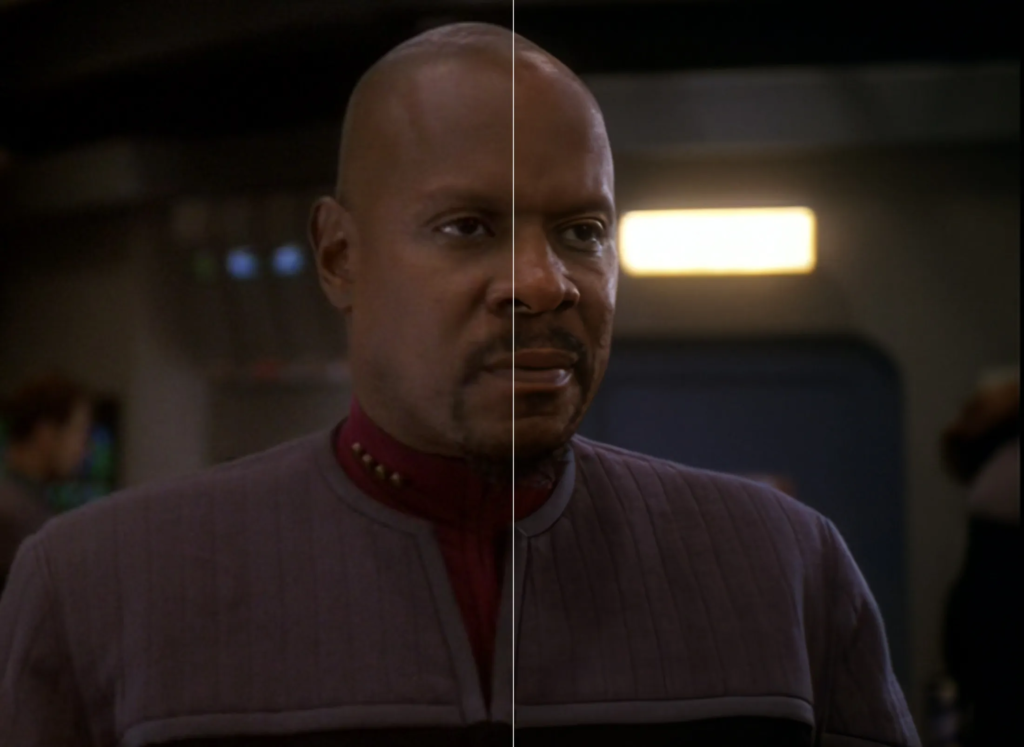I’m watching ‘AI upscaled’ Star Trek and it isn’t terrible
What this means is that if you want to watch DS9 (or Voyager for that matter), you have to watch it more or less at the quality in which it was broadcast back in the ’90s. Like TNG, it was shot on film but converted to video tape at approximately 480p resolution. ...
There’s a lot more detail carried in the image that just isn’t obviously visible — so really, we aren’t adding but recovering it. ...
The version I got clocks in at around 400 megabytes per 45-minute episode, low by most standards, and while there are clearly smoothing issues, badly interpolated details, and other issues, it was still worlds ahead of the “official” version. As the quality of the source material improves in later seasons, this contributes to improved upscaling as well. Watching it let me enjoy the show without thinking too much about its format limitations; it appeared more or less as I (wrongly) remember it looking. ...
The real question, however, is why Paramount, or CBS, and anyone else sitting on properties like DS9 haven’t embraced the potential of intelligent upscaling. It’s gone from highly technical oddity to easily leveraged option, something a handful of smart people could do in a week or two. If some anonymous fan can create the value I experienced with ease (or relative ease — no doubt a fair amount of work went into it), why not professionals? ...
See the full story here https://techcrunch.com/2023/12/02/ai-upscaled-star-trek-deep-space-9-ds9/

Pages
- About Philip Lelyveld
- Mark and Addie Lelyveld Biographies
- Presentations and articles
- Tufts Alumni Bio